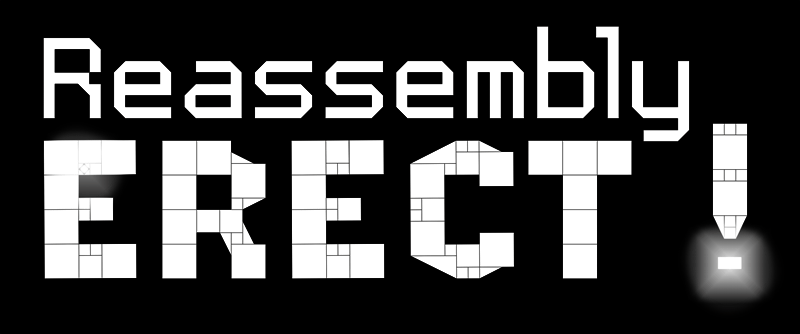Over-Lappy Lappy
If you’ve played Reassembly for a while, eventually you will have seen ships that stack overlapping parts. Some players consider these techniques cheating. Others see them as a normal part of the game and regularly use them in tournaments. Either way, if you’re interested in how it’s done, or just bored with the game and looking to try some new techniques, here are few how-to videos created by MonsPubis:
Victories Not Guaranteed
Keep in mind that just overlapping as many blocks as possible does not necessarily make a ship better. As with anything, there a pluses and minus to using these glitches.
Pros:
The main benefit of stacking blocks is that you can fit more modules into smaller spaces. Large weapons can be crammed into fighter-sized ships. Shields and generators can be stacked into small, defensible locations. Modules can be stacked inside armored regions, providing better defense. Thrusters can be overlapped and provide a lot more mobility to your ships.
Cons:
First, area-effect damage from missiles and splash weapons will effect all the blocks within their radius. This means that even though you might have 20 blocks stacked together in a small area, if they get hit by a large splash weapon, all 20 blocks will take damage. This could be detrimental to your ship, whereas if you had just built the ship normally, the parts would all be spread out and only a few would have taken damage.
Secondly, blocks that are stacked may build and repair more slowly than if you had built them with all four sides connected. If you’ve ever watched a long Tinkrel cannon build, you know that blocks can’t start building until the block they are connected to is built. The more connections you have on your blocks, the faster they build or repair. This is unlikely to be and issue in tournaments since ships start-off pre-built, but it may be a consideration in the campaign game, where build and repair speeds can mean survivability.
Thirdly, it is possible to glitch-out your ship. If overlapping parts end-up unintentionally connecting to a random node, you’ll end up with a scrambled mess. Watch how your blocks are aligning and try to design things so connection points don’t intersect in ways you don’t want. … It is very possible to corrupt your ship blueprint, so caution is advised.
Lastly, remember that just because you have combined many blocks into smaller space, does not mean they they don’t still have the same mass, use the same energy, and cost the same amount of P. If you combine a lot of blocks into a small section of your ship, you are weighing it down or possibly unbalancing it. You still have to keep in mind the basic principals that revolve around non-stacked ships. Defense, function, and mobility.
That’s all for now. Enjoy trying new things. :)
